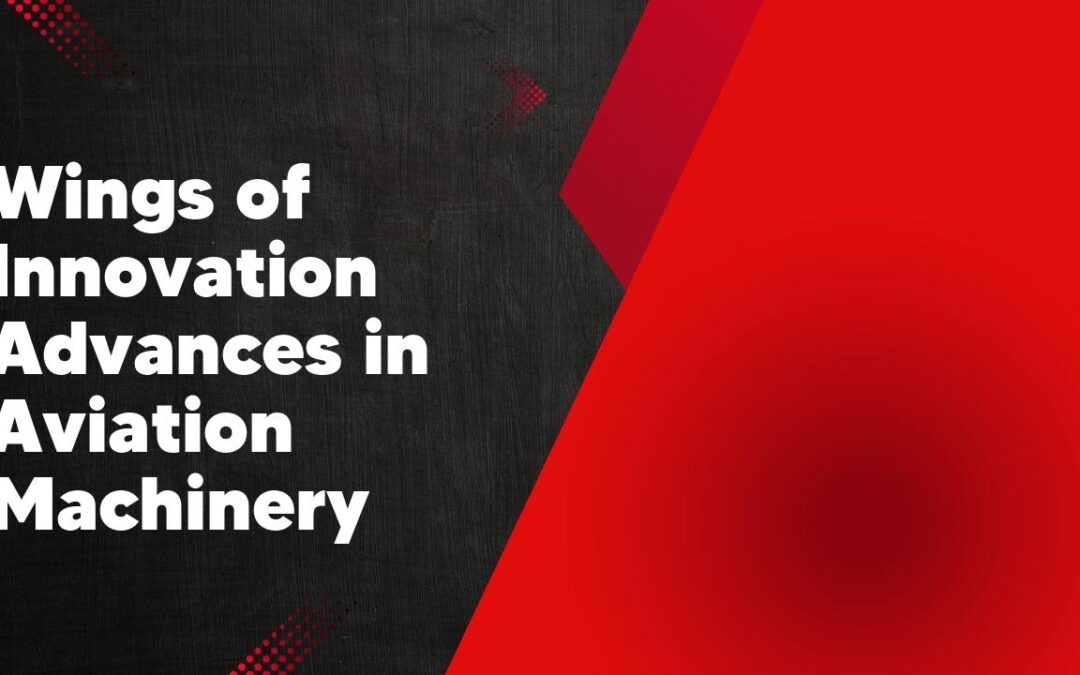Innovation has always been at the heart of the aviation industry, driving advancements in aircraft machinery and technology. From the invention of the Wright brothers’ first successful aircraft to the development of supersonic jets, the evolution of aviation machinery has revolutionized the way we travel and explore the world. In recent years, there have been significant breakthroughs in the field, paving the way for futuristic aircraft designs and innovative propulsion systems.
1. Introduction: The Evolution of Aviation Machinery
Aviation has come a long way since the Wright brothers’ first successful flight in 1903. The evolution of aviation machinery has been fueled by advancements in technology and a quest for human exploration of the skies. From the early days of fragile biplanes to the sophisticated and powerful jets of today, aviation has transformed our world in unimaginable ways. It has connected people across continents, revolutionized transportation, and opened up a whole new realm of possibilities. As a pilot, I have witnessed firsthand the incredible progress that has been made in aviation. It is truly awe-inspiring to see how far we have come, and I am excited to be a part of this ever-evolving industry.
2. From Propellers to Turbofans: A Look at Engine Innovations

I have always been fascinated by the advancements in aircraft engine technology. From the early days of propellers to the more modern turbofans, the developments in this field have revolutionized the way we travel. The transition from propellers to turbofans has been especially remarkable. Turbofans offer improved fuel efficiency, reduced noise levels, and increased power, making them the preferred choice for most commercial aircraft today. The incorporation of turbofans has made flying more sustainable and environmentally friendly, as these engines produce lower emissions compared to their predecessors. It is incredible to witness how engine innovations have not only made air travel more efficient but also contributed to environmental conservation.
3. Revolutionary Materials: Unlocking the Potential of Composite Structures
In my opinion, one of the most exciting developments in the field of engineering is the use of revolutionary materials to unlock the potential of composite structures. These materials are being used to create lightweight and strong structures that were previously unimaginable. The combination of different materials, such as carbon fibers and epoxy resins, has resulted in composite materials that are not only stronger than traditional materials but also more resistant to corrosion and heat. This has opened up a world of possibilities in various industries, including aerospace, automotive, and construction. Composite structures have the potential to revolutionize the way we design and build everything from airplanes to bridges, making them more efficient and sustainable.
4. The Rise of Artificial Intelligence in Aviation Technology
Artificial intelligence has made significant strides in aviation technology, revolutionizing the industry in ways we couldn’t have imagined before. As a pilot, I am amazed at how AI has transformed the way we fly. One of the most notable advancements is the integration of AI into aircraft control systems, enhancing their capabilities and improving safety. With AI, our planes can quickly analyze vast amounts of data, including weather patterns and flight routes, to make real-time decisions and adjust accordingly. This not only allows for a smoother flying experience but also reduces the risk of human error. Furthermore, AI has also played a crucial role in improving maintenance practices by predicting and detecting potential mechanical issues. Thanks to AI, aviation has become more efficient, reliable, and ultimately, safer for passengers and crew alike.
5. Advanced Avionics: Transforming Cockpit Systems for Greater Efficiency
As a pilot, I have witnessed firsthand the incredible advancements in avionics that have transformed cockpit systems for greater efficiency. These advanced avionics have revolutionized the way we fly, providing us with more precise navigation tools, enhanced situational awareness, and improved communication capabilities. With the integration of technologies such as synthetic vision systems, heads-up displays, and advanced flight management systems, pilots are now able to confidently navigate through challenging weather conditions and complex airspace. This level of automation and accuracy not only improves safety but also reduces pilot workload, allowing us to focus on other critical aspects of the flight. Furthermore, the data collected by these avionics systems can be analyzed and used to optimize flight routes and fuel efficiency, resulting in cost savings for airlines. The future of aviation undoubtedly lies in the continued development and implementation of these advanced avionics systems, as they promise even greater efficiency and safety for pilots and passengers alike.
6. Challenges and Opportunities in Electric and Hybrid Aircraft Development
As a woman working in the field of electric and hybrid aircraft development, I have personally experienced both the challenges and opportunities that exist in this industry. One of the main challenges is the male-dominated nature of the field. There are often times when I find myself in meetings or conferences, surrounded by mostly men. This can sometimes make it difficult to have my voice heard or ideas taken seriously. However, I also see this as a great opportunity for me to stand out and make a difference. By bringing a unique perspective and approach to the table, I am able to contribute in a way that helps drive innovation and progression in the field. Additionally, as the demand for sustainable aviation solutions continue to grow, there is a great opportunity for women to play a significant role in shaping the future of electric and hybrid aircraft development. By breaking barriers and overcoming challenges, we can pave the way for a more diverse and inclusive industry.
Conclusion
In conclusion, the continuous advancements in aviation machinery have significantly contributed to the evolution of the aviation industry. These innovations have led to increased efficiency, safety, and reliability in air travel. As technology continues to progress, the future of aviation looks promising with even more groundbreaking developments on the horizon.
What is Wings of Innovation?
Wings of Innovation is a program dedicated to showcasing the latest advancements in aviation machinery.
Who is involved in the program?
The program involves a team of experts from various aviation companies and research institutions.
What are some recent advances in aviation machinery?
Recent advances in aviation machinery include lightweight materials, improved fuel efficiency, and advanced navigation systems.
How can I attend the Wings of Innovation showcase?
To attend the Wings of Innovation showcase, you can register online through the program’s official website.
Is Wings of Innovation open to the public?
Yes, Wings of Innovation is open to the public. Anyone with an interest in aviation machinery is welcome to attend.
What are the benefits of attending Wings of Innovation?
Attending the Wings of Innovation showcase allows you to stay updated on the latest advancements in aviation machinery, network with industry professionals, and gain insights into the future of aviation technology.

